The NVIDIA SHIELD Tablet Review
by Joshua Ho on July 29, 2014 9:00 AM ESTDisplay
While this device is targeted towards gaming, as a tablet it also needs a great display. In order to better test this, we turn to our custom workflow in CalMAN 5 to get a better idea of how good the display is. To start, we’ll look at the basics and move on from there. All of these tests were done with sRGB as it provides the best results.
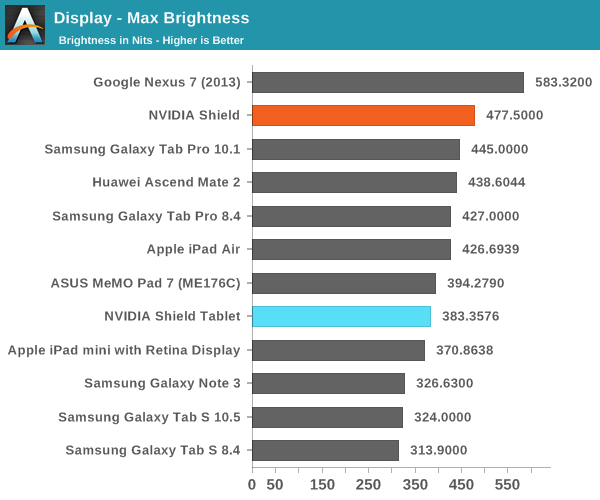
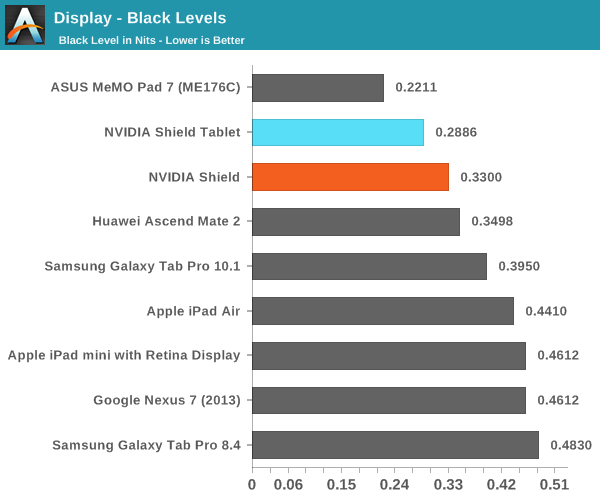

Unfortunately, it seems that the display is a bit dim compared to the competition. It’s still well within spec and plenty bright for indoor usage, but outdoors it won’t be as easy to read. Contrast is definitely up to par though, and as far as I can tell in normal usage image-dependent dimming is disabled, so the display has a relatively high native contrast.
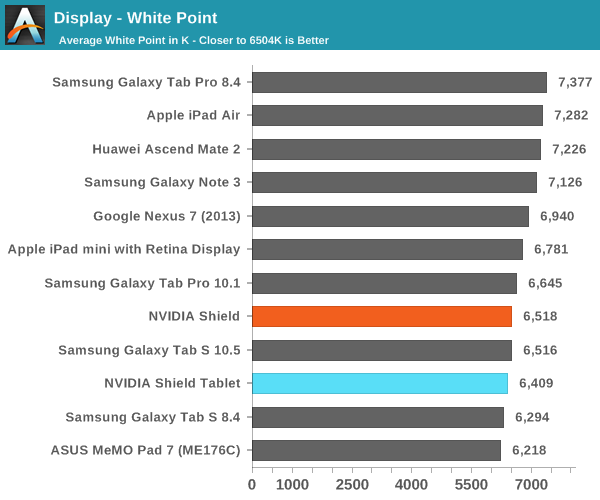
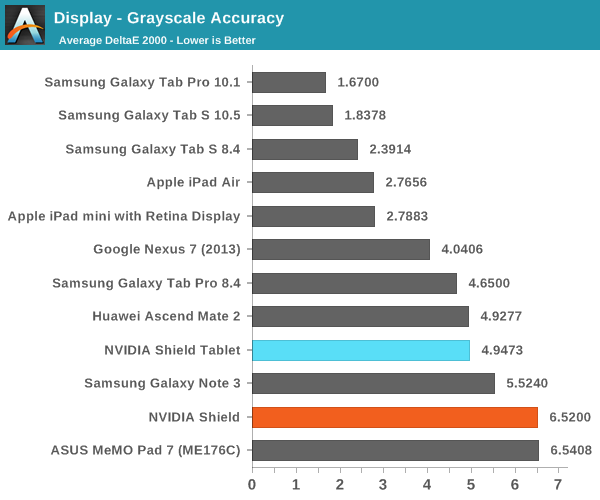
In the grayscale test, NVIDIA has done a relatively good job in keeping a balanced white point, although error ends up a bit high relative to what we’ve seen recently. It’s definitely acceptable for most users, at any rate. It's important to note here that the grayscale accuracy error average is not just a measurement of RGB color balance, as vision also depends upon the luminance aspect to be correct.
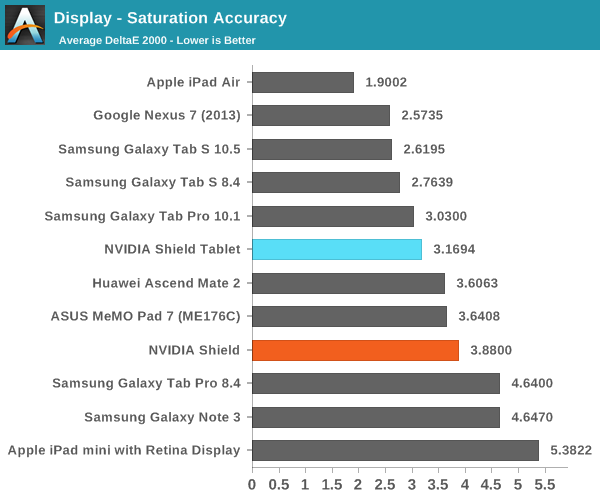
The saturation test is where things start to fall apart. Unfortunately, it’s quite clear that the backlight used in this device just doesn’t have pure enough wavelengths for red and blue, and the result is that the gamut is well below sRGB, around what we see for the iPhone 4/4s and iPad mini line. This may be an attempt to improve power consumption, but I suspect that most are willing to forgo some battery life for a higher quality display. NVIDIA’s sRGB calibration is good up to the 80% saturation mark, but everything else past that point will have the same color, so it’s clear that NVIDIA’s display calibration tries to make do with what it has.
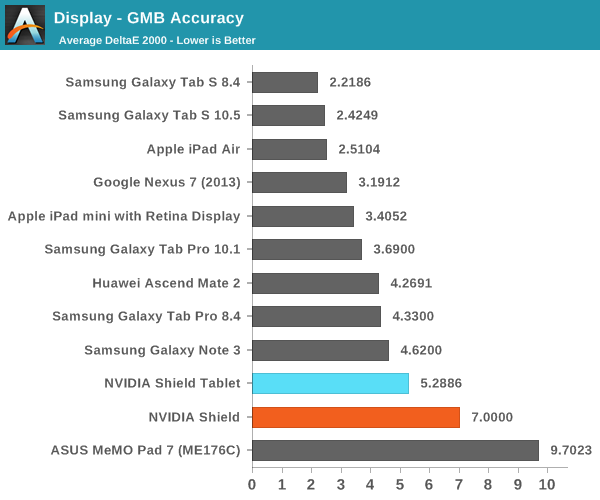
As expected, the ColorChecker shows the results of the poor gamut and some issues present in the grayscale. Error ends up relatively high. The display is still decent, but relative to the competition it doesn’t stack up very well.


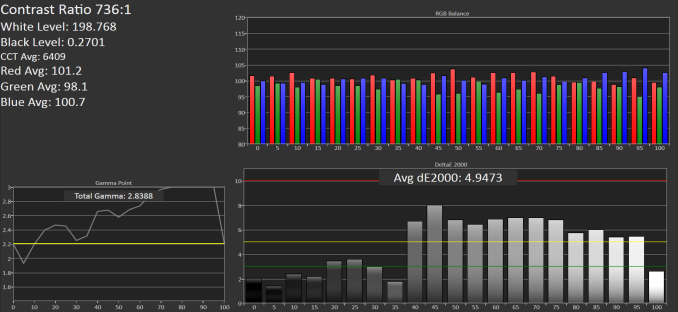
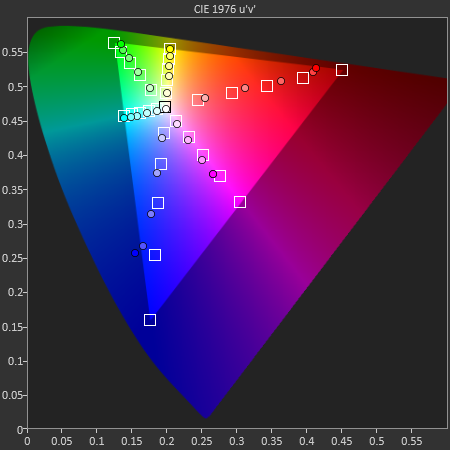
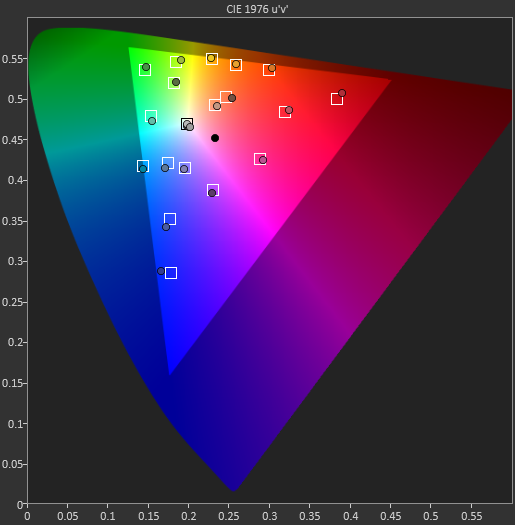








174 Comments
View All Comments
ddriver - Tuesday, July 29, 2014 - link
What you mean by "rich colors" is OVER-SATURATION, not color accuracy but the full opposite of it. Most games actually prefer TN panels because of their fast refresh rates, and TN panels' color accuracy suks big time.aliquis - Sunday, November 9, 2014 - link
Regardless it's fair to say most gamers use TN monitors and those are far from perfect but gamers have used them anyway due to speed or price.B3an - Tuesday, July 29, 2014 - link
I know for a fact i can see a noticeable difference. In the same way i can easily see a difference between IPS and shitty TN panels. So YOU'RE fooling yourself if you actually believe that.inighthawki - Tuesday, July 29, 2014 - link
And you're showing your foolishness by comparing color accuracy to color precision. The difference between TN and IPS panels typically stems from color depth. Most TN panels are 6 bit color with dithering, while IPS panels can be 8 bit, or 10 bit simulated, producing a higher range of visible color.Here we are talking about the ACCURACY of colors. i.e. that shade of blue appears as (10, 24, 237) instead of (11, 28, 233). While playing a game, this kind of thing is generally unnoticeable, because you do not have a reference image or render to define what it should look like in the first place. In rare cases when you have large swatches of deep vivid colors you might notice they are a bit undersaturated, but for the most part, the lighting and texture quality in even AAA titles do not produce this kind of photorealism.
ddriver - Tuesday, July 29, 2014 - link
And in the end, it is all relative, since all humans perceive colors differently. This is not an issue for calibrating equipment, which itself can be calibrated, but the human eye is an analogue instrument and no calibration for its color reproduction currently exists.Color accuracy is vital only in one field - and that is content creation. I paid 7k for a "reference" screen and 4k for reference audio monitors, and exactly for that reason. But for content consumption it is irrelevant, considering most users don't even have pro-grade equipment and the content is going to be consumer on a wide range of devices, ranging from totally cr@ppy to above decent.
niva - Tuesday, July 29, 2014 - link
Seriously, the color accuracy being 1% or even 10% off will really mess up your gaming experience? Color accuracy is wildly irrelevant to anyone but professionals who work in image/print/video production industries.dstarr3 - Tuesday, July 29, 2014 - link
I have to agree that color accuracy in gaming is a non-issue. In developing games, sure. But not in playing them. It's not like anyone is printing screenshots for work. Unless, again, you're a dev.ddriver - Tuesday, July 29, 2014 - link
Nah, I am not a moron, in fact I've been an artist in a AAA game studio for 6 years, so I know what I am talking about. You on the other hand might just be that, seeing your "foolproof" argumentation skills :Dmikegonzalez2k - Wednesday, August 6, 2014 - link
Most of these people probably aren't in the industry and hence wouldn't know such things. That is why they are consistently on here instead of working on actual projects. Especially those that comment daily. You have to wonder what they are doing with their life. I wouldn't pay them much attention. It isn't worth it.dcyli - Wednesday, July 30, 2014 - link
HURR DURR, I PLAY GAMES FOR DA COLORS. DUURRR